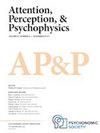Fixation-related potentials during a virtual navigation task: The influence of image statistics on early cortical processing
Abstract
Historically, electrophysiological correlates of scene processing have been studied with experiments using static stimuli presented for discrete timescales where participants maintain a fixed eye position. Gaps remain in generalizing these findings to real-world conditions where eye movements are made to select new visual information and where the environment remains stable but changes with our position and orientation in space, driving dynamic visual stimulation. Co-recording of eye movements and electroencephalography (EEG) is an approach to leverage fixations as time-locking events in the EEG recording under free-viewing conditions to create fixation-related potentials (FRPs), providing a neural snapshot in which to study visual processing under naturalistic conditions. The current experiment aimed to explore the influence of low-level image statistics—specifically, luminance and a metric of spatial frequency (slope of the amplitude spectrum)—on the early visual components evoked from fixation onsets in a free-viewing visual search and navigation task using a virtual environment. This research combines FRPs with an optimized approach to remove ocular artifacts and deconvolution modeling to correct for overlapping neural activity inherent in any free-viewing paradigm. The results suggest that early visual components—namely, the lambda response and N1—of the FRPs are sensitive to luminance and spatial frequency around fixation, separate from modulation due to underlying differences in eye-movement characteristics. Together, our results demonstrate the utility of studying the influence of image statistics on FRPs using a deconvolution modeling approach to control for overlapping neural activity and oculomotor covariates.

 求助内容:
求助内容: 应助结果提醒方式:
应助结果提醒方式:


